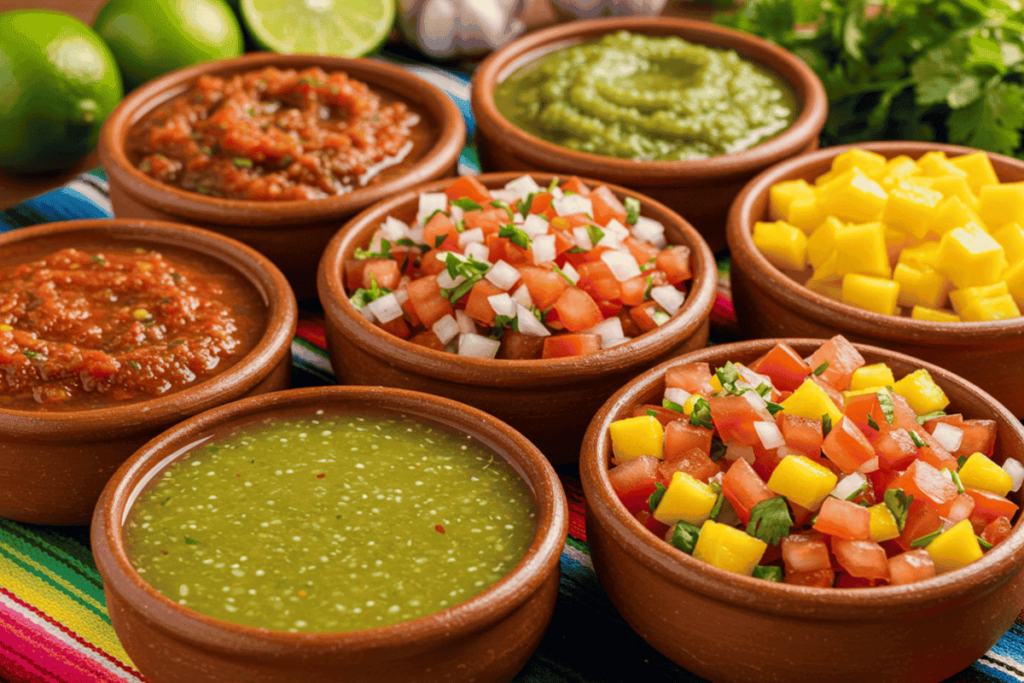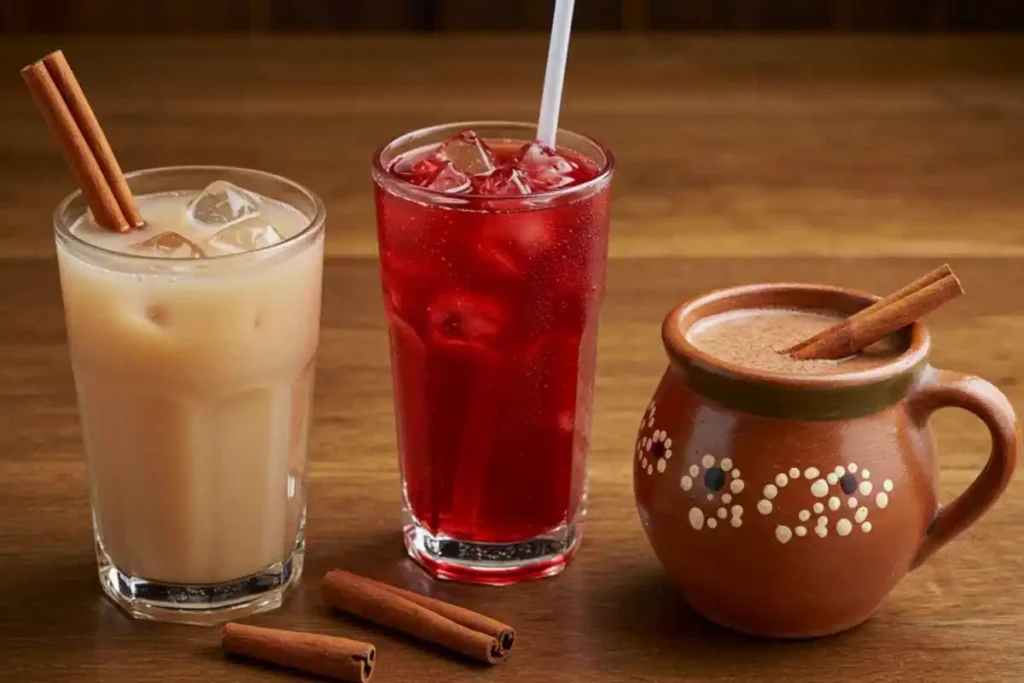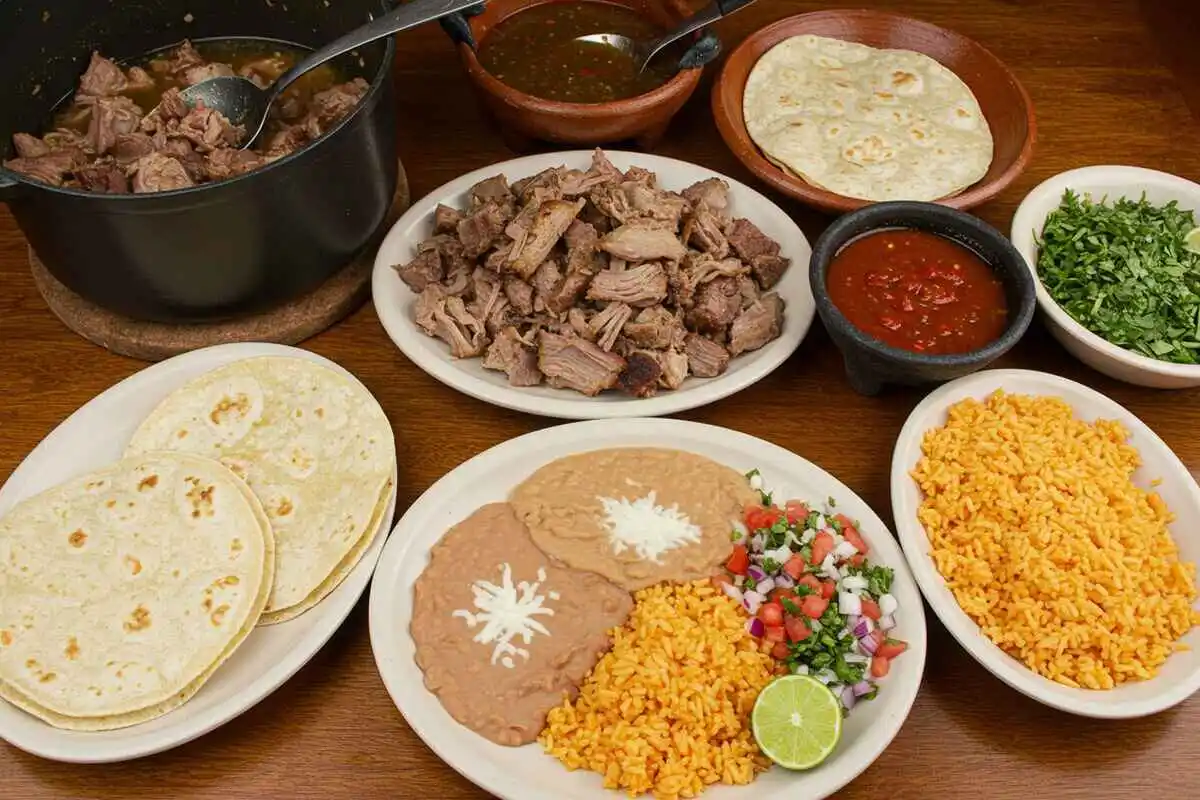1. What is Carnitas?
What is traditionally served with carnitas? This question often comes to mind when enjoying this beloved Mexican dish. Carnitas, meaning “little meats” in Spanish, is a traditional Mexican specialty celebrated for its rich flavor and tender texture. Cooks prepare it by slow-cooking or braising pork, typically shoulder cuts, in its fat until the meat becomes melt-in-your-mouth tender. This method creates a crispy exterior while keeping the interior juicy and flavorful. As the centerpiece of various meals, carnitas is often accompanied by a variety of sides and garnishes that enhance its irresistible flavors.
“Fresh garnishes like lime and radishes are staples in what is traditionally served with carnitas.”
What Makes Carnitas Special?
The magic of carnitas lies in its preparation. Cooks traditionally use a large copper pot to slow-cook pork in lard, adding citrus, garlic, bay leaves, and spices. This process tenderizes the meat and infuses it with rich flavors that pair beautifully with a variety of accompaniments.
1.1 Origins of Carnitas
Carnitas has deep historical roots, with its preparation method and ingredients reflecting the indigenous and Spanish influences on Mexican cuisine. The use of pork and lard dates back to the colonial period when the Spanish introduced these ingredients to Mexico. Over time, Mexican cooks adapted these influences, combining them with native ingredients like chili peppers and citrus to create a uniquely Mexican dish.
A Michoacán Specialty
People across Mexico enjoy carnitas, but Michoacán holds a special place in its culinary tradition. In this region, families consider carnitas preparation an art form and pass down recipes through generations. Cooks in Michoacán often use copper pots, a hallmark of their cooking, to distribute heat evenly and achieve perfectly cooked meat.
Carnitas in Modern Times
Today, carnitas has transcended borders, becoming a favorite in Mexican restaurants and street food markets worldwide. Despite its growing popularity, the dish remains a symbol of Mexican heritage, with its preparation and accompaniments reflecting regional variations and personal touches.
1.2 The Importance of Side Dishes in Traditional Mexican Cuisine
Side dishes are an integral part of Mexican cuisine, complementing and elevating the main dish. In the case of carnitas, the right accompaniments are crucial for achieving a harmonious balance of flavors and textures.
Enhancing the Carnitas Experience
Carnitas’ rich and savory profile pairs well with a variety of sides, each offering unique flavors and textures. From the freshness of salsas to the creaminess of guacamole, these sides not only enhance the taste of carnitas but also reflect the vibrant diversity of Mexican cuisine.
A Feast for All the Senses
Mexican meals are designed to be multi-sensory experiences. The accompaniments for carnitas add color, crunch, and zest, creating a feast for the eyes as well as the palate. This approach to dining celebrates the communal nature of Mexican food, bringing people together over a shared table of delicious offerings.
2. Traditional Sides for Carnitas
“The answer to what is traditionally served with carnitas lies in a variety of beloved Mexican side dishes.”
Carnitas offers incredible versatility, but the sides you serve alongside it truly complete the meal. These accompaniments add layers of flavor, texture, and freshness. Rooted in Mexican culinary traditions, these sides reflect regional variations while enhancing the carnitas experience. Below, we explore some staples that often accompany this iconic dish.
2.1 Tortillas: Corn or Flour?
Tortillas are the foundation of any carnitas meal, providing the perfect vessel for the tender, flavorful pork. The debate over corn versus flour tortillas often comes down to personal preference, but each has its merits.
- Corn Tortillas: A staple in Mexican cuisine, corn tortillas are the traditional choice. Made from masa (corn dough), they have a slightly nutty flavor and a firm texture that pairs beautifully with the richness of carnitas. Corn tortillas also provide an authentic experience, staying true to Mexican heritage.
- Flour Tortillas: While less traditional, flour tortillas are a popular option, particularly in northern Mexico and the United States. Their soft, pliable texture makes them ideal for wrapping up carnitas, ensuring every bite is packed with flavor.
Pro Tip: To enhance the taste, lightly heat tortillas on a griddle or open flame before serving. Warm tortillas have a subtle smokiness that elevates the meal.
2.2 Salsas and Their Varieties
Salsas are essential to any carnitas spread, providing bursts of flavor and varying levels of heat. The type of salsa you choose can dramatically alter the flavor profile of your dish.

- Salsa Verde: Made with tomatillos, cilantro, onion, and jalapeños, this green salsa offers a tangy, mildly spicy complement to the richness of carnitas.
- Salsa Roja: This classic red salsa is made with ripe tomatoes, chili peppers, and garlic. Its smoky and slightly sweet flavor adds depth to the dish.
- Pico de Gallo: A fresh and chunky salsa, pico de gallo combines diced tomatoes, onions, cilantro, and lime juice. Its bright and zesty flavor balances the savoriness of carnitas.
- Spicy Salsas: For those who love heat, habanero or chili de árbol salsas can add an extra kick. These salsas should be used sparingly, as their intensity can overpower the dish.
- Salsas provide vibrant flavors, showcasing what is traditionally served with carnitas in authentic Mexican meals
Serving Tip: Offer a variety of salsas so everyone can customize their carnitas to their liking.
2.3 Guacamole: The Creamy Essential
Guacamole is a creamy and flavorful accompaniment that adds a touch of luxury to any carnitas meal. Made from ripe avocados, lime juice, salt, and cilantro, guacamole balances the richness of the pork with its smooth texture and tangy notes.
For added complexity, mix in diced tomatoes, onions, or a pinch of chili powder. The creaminess of guacamole not only enhances the taste of carnitas but also provides a cooling element that pairs well with spicy salsas.
2.4 Frijoles (Beans): Refried, Charro, or Black?
Beans play a vital role in Mexican cuisine, providing both protein and heartiness to the meal. With carnitas, they enhance the dish as a complement and a satisfying filler.
- Refried Beans: Cooks prepare refried beans by mashing them to a smooth consistency and cooking them with lard for a creamy, slightly smoky flavor. Spread them on tortillas or enjoy them as a hearty side.
- Charro Beans: Charro beans feature whole pinto beans simmered with onions, garlic, and spices. Their flavorful, soupy texture contrasts beautifully with the richness of carnitas.
- Black Beans: Black beans deliver a lighter option with their earthy flavor. They pair especially well with the citrusy notes in many carnitas marinades
2.5 Rice: Spanish or Mexican Rice?
Rice is a classic accompaniment to carnitas, adding a hearty base to the meal. The two most common types served are:
- Spanish Rice: A flavorful rice dish cooked with tomatoes, onions, garlic, and spices. Its vibrant orange color and slightly tangy taste complement the savory nature of carnitas.
- Mexican Rice: Similar to Spanish rice but often includes peas, carrots, or corn, making it a colorful and texturally interesting addition to the plate.
3. Fresh and Tangy Additions
“Fresh garnishes like lime and radishes are staples in what is traditionally served with carnitas.”
In addition to the staples, fresh and tangy sides bring brightness and balance to a carnitas meal. These additions are simple yet impactful, cutting through the richness of the pork and enhancing the overall dining experience.
3.1 Pickled Vegetables: A Burst of Flavor
Pickled vegetables, such as carrots, jalapeños, and onions, are a traditional garnish for carnitas. Their tangy and slightly spicy flavor adds a refreshing contrast, while their crunch provides a satisfying texture. These vegetables are often prepared in vinegar with spices like oregano and bay leaves.
3.2 Limes and Radishes: The Perfect Garnishes
Limes and radishes are simple yet essential additions to a carnitas platter.
- Limes: A squeeze of fresh lime juice brightens up the dish, highlighting the natural flavors of the pork and sides.
- Radishes: Thinly sliced radishes offer a crisp, peppery bite that contrasts beautifully with the tender meat.
3.3 Cabbage Slaw: A Crunchy Companion
Cabbage slaw is another fresh and tangy side that pairs well with carnitas. Made with shredded cabbage, lime juice, and a touch of salt, this slaw adds crunch and a zesty kick to each bite. For added flavor, include cilantro or a drizzle of avocado crema.
4. Modern Twists on Traditional Sides
“Fresh garnishes such as lime wedges and radishes also reflect what is traditionally served with carnitas in Mexican households.”
As Mexican cuisine continues to evolve and gain global popularity, contemporary chefs and home cooks have embraced innovative twists on traditional sides for carnitas. These modern variations add a fresh perspective while honoring the dish’s roots.
4.1 Fusion Cuisine: Global Influence on Carnitas Accompaniments
In today’s culinary world, the blending of cultures has given rise to exciting new ways to serve carnitas. Here are some popular fusion-inspired sides:
- Kimchi Slaw: Inspired by Korean cuisine, this side combines the crunch of traditional slaw with the spicy, tangy kick of kimchi. The bold flavors pair well with the savory richness of carnitas.
- Mango Salsa: A tropical twist on traditional salsa, mango salsa incorporates sweet and spicy flavors. The combination of ripe mango, red onion, jalapeño, and lime juice creates a bright and refreshing contrast.
- Pineapple Rice: Infused with chunks of pineapple and coconut milk, this variation on Mexican rice introduces a sweet and creamy element to the meal.
- Avocado Crema: A modern take on guacamole, avocado crema is a smooth blend of avocado, sour cream, lime juice, and seasonings. It can be drizzled over carnitas tacos or used as a dipping sauce for tortillas.
Why Fusion Works
The versatility of carnitas makes it a perfect canvas for experimentation. These modern sides offer an exciting way to explore new flavor combinations while staying true to the dish’s spirit.
5. How to Create a Perfect Carnitas Platter
Building the ideal carnitas platter requires thoughtful selection and arrangement of sides to complement the star of the show: the tender, juicy pork.
5.1 Key Elements of a Well-Balanced Platter
- Protein (Carnitas): Start with freshly prepared carnitas, ensuring a crispy exterior and juicy interior.
- Tortillas: Offer both corn and flour tortillas to cater to varying preferences. Warm them for the best flavor and texture.
- Salsas: Provide a range of salsas, from mild pico de gallo to spicy salsa roja, to accommodate different heat levels.
- Fresh Garnishes: Include lime wedges, sliced radishes, and cabbage slaw for added brightness and crunch.
- Creamy Elements: Serve guacamole or avocado crema for a creamy complement to the rich pork.
- Hearty Sides: Add rice and beans to round out the meal and provide a satisfying base.
- Pickled Vegetables: For a tangy, crunchy touch, include a mix of pickled carrots, jalapeños, and onions.
5.2 Presentation Tips
- Arrange Thoughtfully: Place each side in its own section or small bowl, allowing diners to customize their plates.
- Colorful Spread: Use vibrant sides like pico de gallo, pickled vegetables, and lime wedges to create an appealing presentation.
- Serve Family-Style: Carnitas meals are meant to be shared. Present everything on a large platter or several serving dishes to encourage communal dining.
Pro Tip: Garnish the platter with fresh cilantro and edible flowers for an extra touch of elegance.
6. Beverages That Pair with Carnitas
While carnitas is traditionally paired with alcoholic beverages like beer or tequila, there are plenty of non-alcoholic options that complement its flavors beautifully.

6.1 Traditional Mexican Aguas Frescas
Aguas frescas are light, refreshing drinks made with fruit, seeds, or grains. They’re a perfect match for the bold flavors of carnitas. Some popular options include:
- Horchata: A creamy rice-based drink with hints of cinnamon and vanilla. Its sweetness balances the savory richness of carnitas.
- Agua de Jamaica: Made from hibiscus flowers, this tangy and slightly tart beverage cuts through the heaviness of the meat.
- Agua de Tamarindo: A tamarind-based drink with a sweet and sour profile that pairs well with the citrusy notes in carnitas.
6.2 Coffee, Hot Chocolate, and Other Warm Beverages
For a comforting accompaniment, especially during colder months, consider warm beverages such as:
- Mexican Hot Chocolate: Made with cinnamon and spices, this rich drink complements the depth of flavor in carnitas.
- Cafe de Olla: A traditional Mexican coffee brewed with cinnamon and piloncillo (unrefined sugar). Its bold flavors enhance the meal’s earthy tones.
7. Frequently Asked Questions (FAQs)
1. What pairs with carnitas?
Carnitas pairs well with a variety of sides that complement its rich, savory flavor. Traditional accompaniments include warm tortillas (corn or flour), an assortment of salsas, guacamole, beans (refried or charro), and rice. Fresh garnishes such as lime wedges, radishes, and pickled vegetables provide brightness, while cabbage slaw or pico de gallo adds crunch. Non-alcoholic beverages like aguas frescas and horchata complete the meal perfectly.
2. How do you eat carnitas traditionally?
Traditionally, carnitas is served family-style, with the pork as the centerpiece. Guests build their own tacos by layering carnitas on warm tortillas, adding sides like salsa, guacamole, or cabbage slaw, and garnishing with lime juice or radishes. This communal dining style celebrates the dish’s festive origins and encourages sharing.
3. Do you eat carnitas with flour or corn tortillas?
People enjoy carnitas with both flour and corn tortillas, but corn tortillas remain the traditional choice in Mexican cuisine. Corn tortillas offer an authentic, slightly nutty flavor that complements the pork beautifully. Flour tortillas, on the other hand, provide a softer and more pliable texture. They are especially popular in certain regions and bring a milder taste that lets the other flavors shine.
4. What comes in a carnitas plate?
A typical carnitas plate includes tender, flavorful pork served with traditional sides like rice, beans, and tortillas. Diners usually add fresh garnishes such as lime wedges and radishes. They also enjoy accompaniments like salsas, guacamole, and pickled vegetables. For a well-rounded meal, many choose to pair it with beverages such as aguas frescas or Mexican hot chocolate.
Conclusion
What is traditionally served with carnitas showcases the richness and diversity of Mexican cuisine.
Celebrating the Joy of Carnitas
Carnitas is more than just a dish; it’s a celebration of Mexican culture and culinary heritage. From its rich flavors to the variety of sides that enhance the meal, carnitas represents the vibrant diversity of Mexican cuisine. Whether enjoyed in tacos, on a plate, or as part of a festive gathering, carnitas brings people together over a shared love of good food.
By pairing carnitas with traditional sides like tortillas, salsas, and guacamole, or experimenting with modern twists like kimchi slaw and mango salsa, you can create a meal that’s both delicious and memorable. So gather your family and friends, set the table with an array of colorful accompaniments, and savor the joy of this iconic dish.

